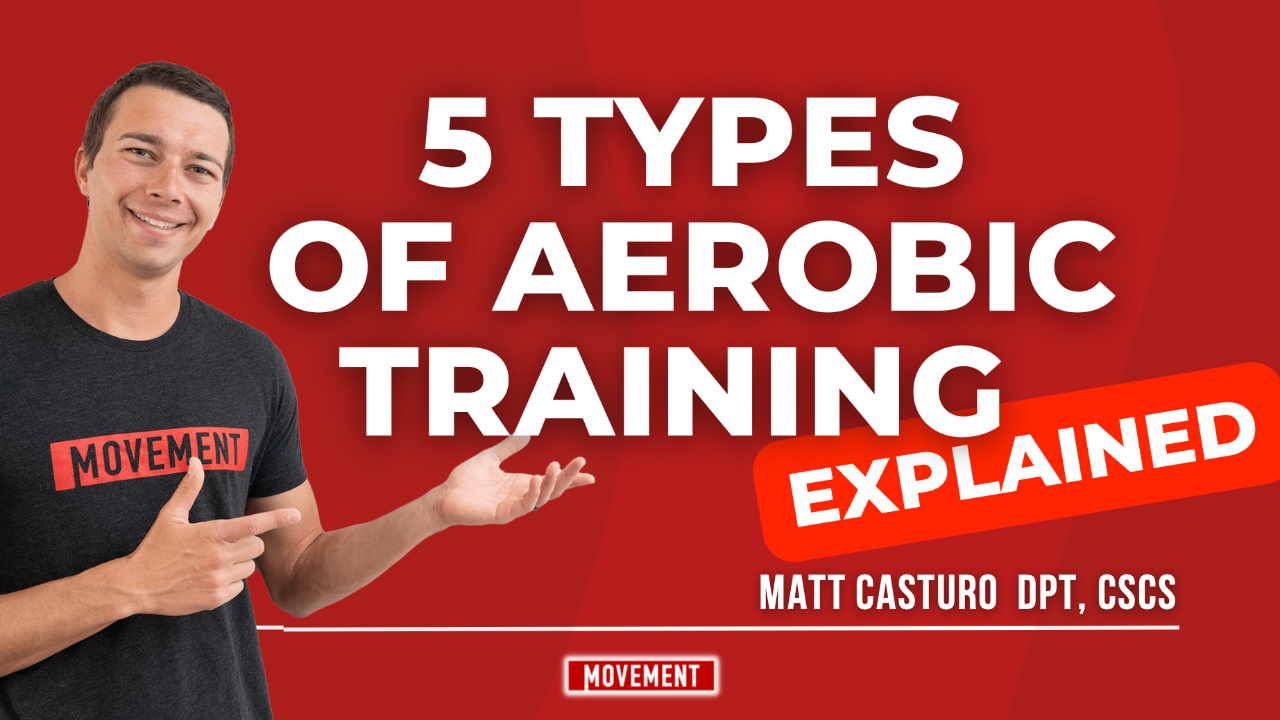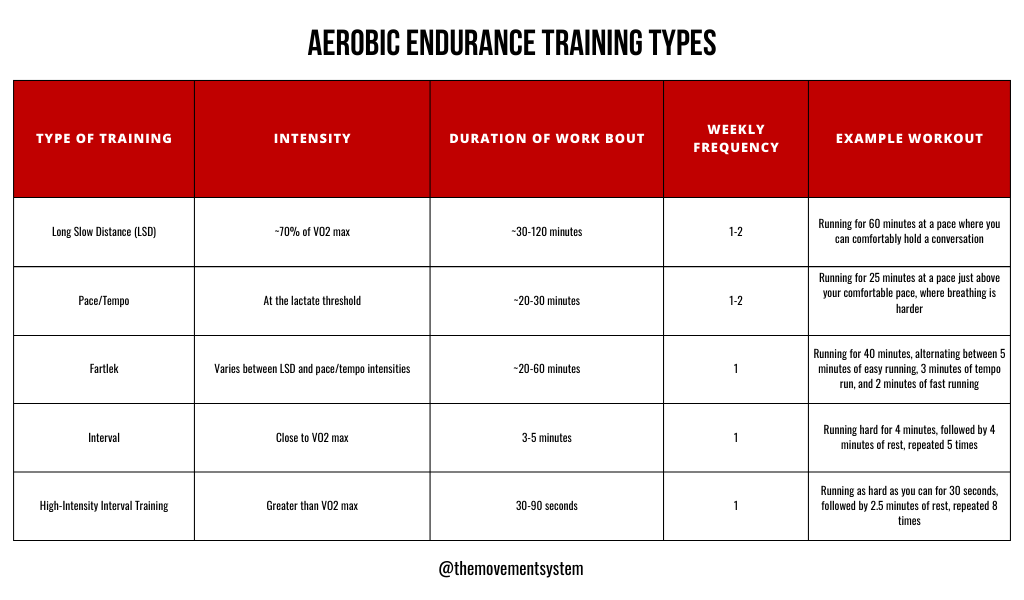5 Types of Aerobic Training Explained | Interval, HIIT, Fartlek, Tempo, and Aerobic Base
Nov 01, 2024
Edited by: Danielle Abel
Types of Aerobic Training Methods
Trying to choose an approach to aerobic training might feel overwhelming to you. There's so much information available on the internet it can sometimes feel like it's hard to figure out which one is "best." The key concept that might help you is figuring out what adaptation you want to improve. In this article, we're going to break down 5 different types of training and give you some examples of when to use these and which athletes might benefit the most from each type.
Aerobic Base Training
This is long slow, distance training that's high volume and low intensity. Typically, it's used in the off-season for conditioning at a low heart rate of less than 80% of max heart rate. Additionally, the distance of these runs is usually longer than your race distance. So, for example, if a runner is a 10k competitor (30-40 minute event), their aerobic base work might be 90-120 minutes of running at a long, slow, conversational pace below the lactate threshold.
Pace/Tempo
Pace or tempo training is slightly more intense than aerobic base work, sometimes called Lactate Threshold training. Pace tempo work consists of 20-30 intervals that are run right around or at an athlete's lactate threshold. These runs are moderate intensity and are done near race pace.
For example, an athlete might run for 20 minutes at their race pace and then walk for 1 minute and do that 3 times for a workout. So this workout might be around 60 minutes compared to their aerobic base work, which would take 90-120 minutes.
A key problem we see with this type of work is that the athlete probably feels like they got a good workout because they're running at a fairly good pace. Still, it's not ideal for developing the aerobic system, and it's not the greatest for developing the anaerobic system either.
Knowing this, pace/tempo work is typically only programmed leading right up to a race, 2-3 weeks out, to promote race-specific adaptations (that subside fairly quickly) but it isn't the greatest for off-season and pre-season training.
Fartlek
Fartlek has a funny name for sure, but it actually just stands for a combined method using both aerobic base and pace/tempo training. It consists of a set number of minutes at an aerobic base pace followed by a shorter amount of time (or it could be longer depending upon how it's programmed) at a pace/tempo speed.
For example, 12 minutes of aerobic base, 8 minutes of pace/tempo, repeat, repeat. This type of training is great for promoting mixed adaptations and might be used 1-2 times per week for a cross-country runner in their off-season or possibly even in their pre-season.
Interval Training
Otherwise known as VO2 Max Specific training, these intervals usually last 3 to 5 minutes with a 1:1 work-to-rest ratio. So, for example, this could be set up as 5-minute hard run followed by a 5-minute walk and maybe the athlete does this 5 times in a row.
This type of interval training is great for field sports (field hockey, soccer, lacrosse, etc.) athletes who need conditioning that mimics the needs of their sport like on and off again types of performance. A total workout using this approach might last 50 minutes in length.
To round out what we've covered thus far, the more intense the training, the shorter the workouts get. This concept aligns with what we know is best for high-intensity workouts, the volume or length isn't very long.
Looking for a step-by-step program to help you learn the information that's on the CSCS exam step by step? Then you might want to check out our online CSCS Prep Course here.
HIIT
High intensity interval training is just that, 30-90 seconds of very high intensity training followed by long rest using a 1:5 work to rest ratio. Meaning if an athlete worked for 1 minute (60 seconds) we would want them to rest for 5 minutes before the next interval of work. Work could include sprints for example, or even intervals on the rower that are above the lactate threshold.
So, the athlete needs to rest a long enough time to be able to put out their maximum workload during each effort (maximum rate of force production).
(You should know that some trainers or influencers on the internet will only program 10, 20, or even 30 seconds of rest between working sets. This isn't actually HIIT because the level of intensity will gradually go down as the exercise continues because you can't maintain a high level of intensity).
HIIT workouts only last about 20 to 30 minutes in total. Additionally, because these sessions are so intense, they shouldn't be programmed very much, often, only once per week for aerobic athletes and maybe 2 times per week for field sport athletes who have these sports demands.
However, even though HIIT is primarily used for aerobic athletes, due to the level of intensity, HIIT training actually is upregulating the anaerobic system (most people don't realize this) in these aerobic athletes.
The below graphic helps to summarize all of these categories and provides some examples for you that may be helpful as well:

Adapted from Table 20.2 from the NSCA Essentials of Strength Training and Conditioning textbook:
Studying for the CSCS Exam? Support & Courses Available
Ready for more support to help you prep for the CSCS exam? Join our Facebook Group, “Strength and Conditioning Study Group,” here. Ready for even more? Our 24-module CSCS Prep Course has exercise science terminology completely laid out for you with even more content than what we’ve provided here, plus chapter quizzes to help you pass the NSCA exam; click the link here to check it out.
Stay connected with news and updates!
Join our mailing list to receive the latest news and updates from our team.
Don't worry, your information will not be shared.
We hate SPAM. We will never sell your information, for any reason.

